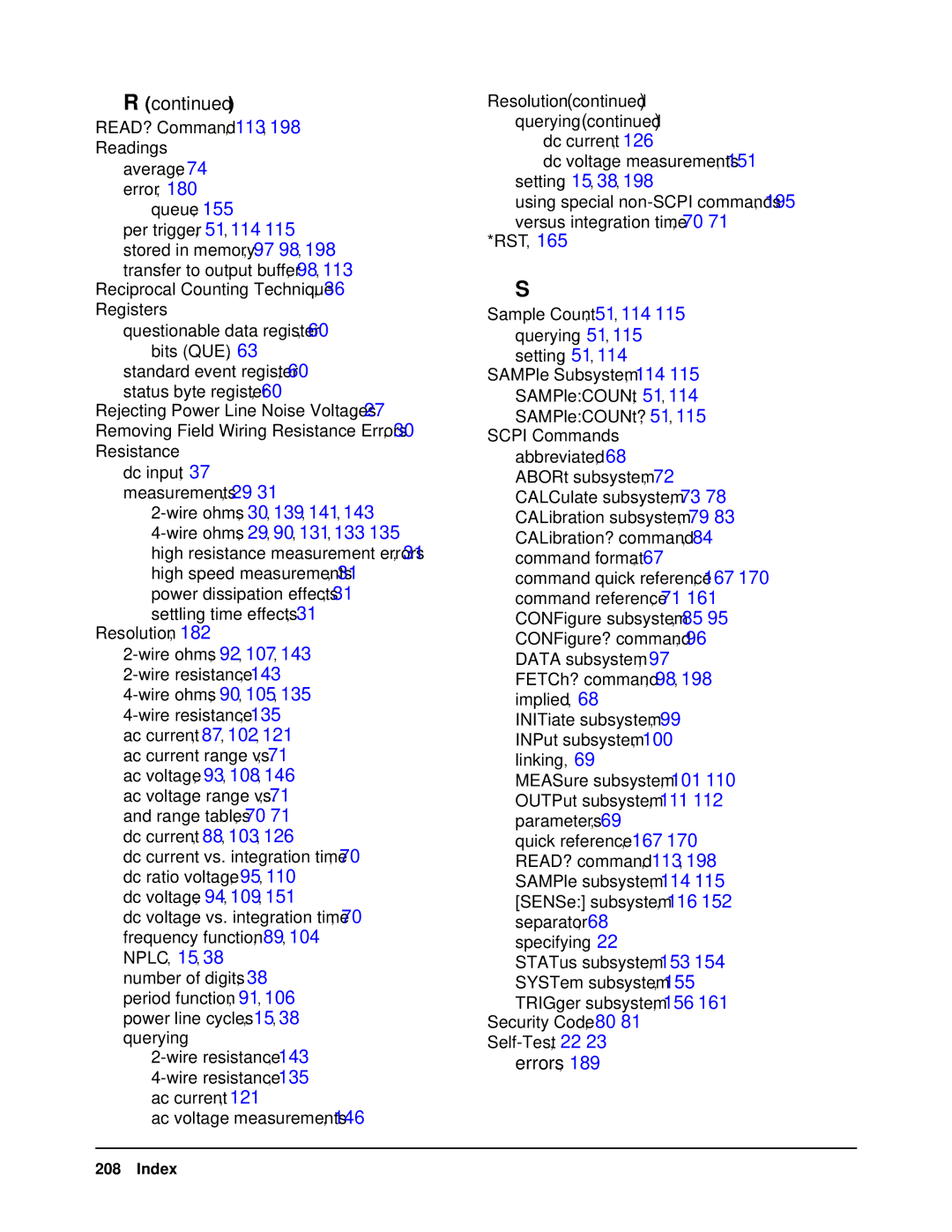R(continued)
READ? Command, 113, 198 Readings
average, 74 error, 180
queue, 155
per trigger, 51, 114– 115 stored in memory, 97– 98, 198 transfer to output buffer, 98, 113
Reciprocal Counting Technique, 36 Registers
questionable data register, 60 bits (QUE), 63
standard event register, 60 status byte register, 60
Rejecting Power Line Noise Voltages, 27 Removing Field Wiring Resistance Errors, 30 Resistance
dc input, 37 measurements, 29– 31
power dissipation effects, settling time effects, 31
Resolution, 182
ac current, 87, 102, 121 ac current range vs., 71 ac voltage, 93, 108, 146 ac voltage range vs., 71 and range tables, 70– 71 dc current, 88, 103, 126
dc current vs. integration time, 70 dc ratio voltage, 95, 110
dc voltage, 94, 109, 151
dc voltage vs. integration time, 70 frequency function, 89, 104 NPLC, 15, 38
number of digits, 38 period function, 91, 106 power line cycles, 15, 38 querying
ac voltage measurements, 146
Resolution (continued) querying (continued)
dc current, 126
dc voltage measurements, 151 setting, 15, 38, 198
using special
*RST, 165
S
Sample Count, 51, 114– 115 querying, 51, 115 setting, 51, 114
SAMPle Subsystem, 114– 115 SAMPle:COUNt, 51, 114 SAMPle:COUNt?, 51, 115
SCPI Commands abbreviated, 68 ABORt subsystem, 72 CALCulate subsystem, 73– 78 CALibration subsystem, 79– 83 CALibration? command, 84 command format, 67
command quick reference, 167– 170 command reference, 71– 161 CONFigure subsystem, 85– 95 CONFigure? command, 96 DATA subsystem, 97
FETCh? command, 98, 198 implied, 68
INITiate subsystem, 99 INPut subsystem, 100 linking, 69
MEASure subsystem, 101– 110 OUTPut subsystem, 111– 112 parameters, 69
quick reference, 167– 170 READ? command, 113, 198 SAMPle subsystem, 114– 115 [SENSe:] subsystem, 116– 152 separator, 68
specifying, 22 STATus subsystem, SYSTem subsystem, TRIGger subsystem,
Security Code, 80– 81
